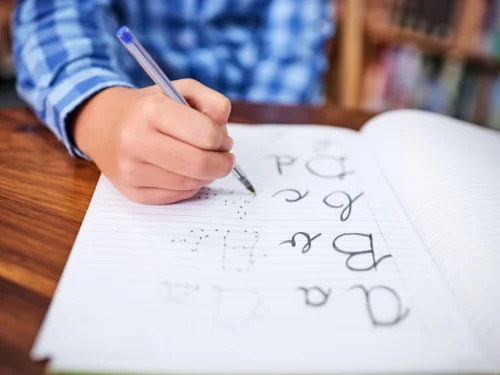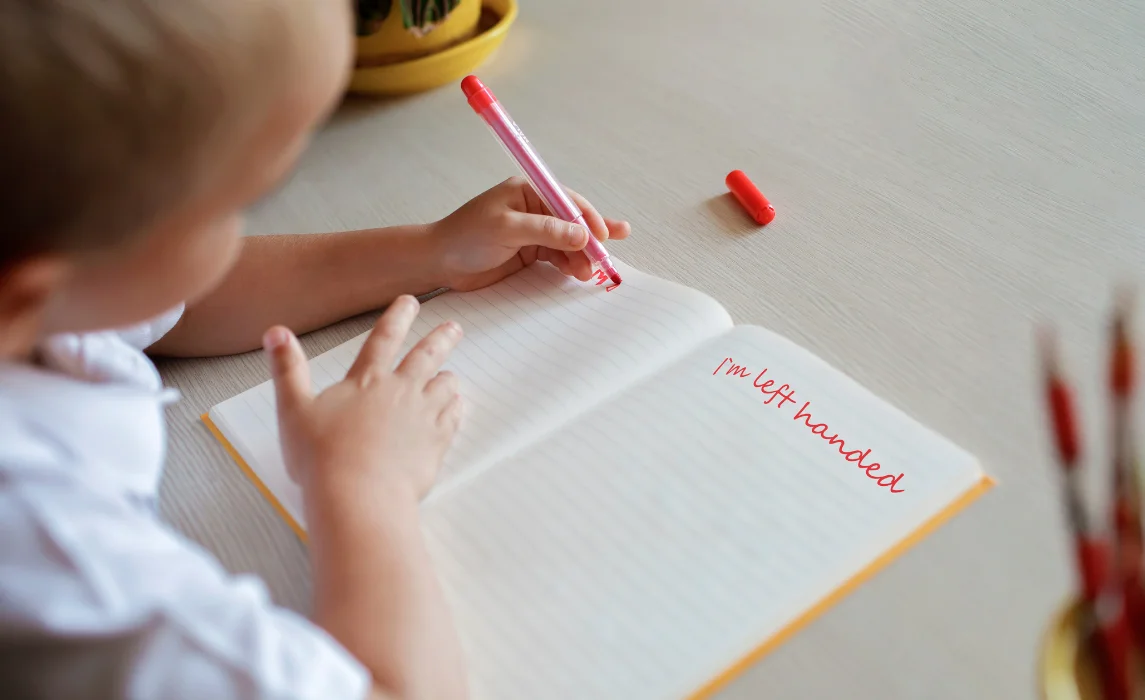Handwriting Progression: From Early Marks to Fluent Writing

Yes—finger plays, clapping games, and dance routines that use hand gestures all help. Combine rhythm and repetition for deeper learning.
Send home simple activity ideas, kits, or worksheets. Offer short instructions and encourage family involvement. Regular practice builds lasting progress.
Try origami, sticker scenes, stringing pasta, or painting with Q-tips. Crafts that use small pieces build precision and control.
Handwriting is more than just putting pen to paper—it is a complex skill that develops gradually through motor growth, sensory processing, and structured teaching. A child’s journey from scribbles to fluent, legible writing spans several years and is supported by both developmental milestones and formal curriculum guidance.
Ages and Key Stages

In the UK, the National Curriculum outlines a structured approach to handwriting progression through defined Key Stages:
Handwriting learning begins informally in the EYFS with pre-writing skills and continues through Key Stages 1–2, where letter formation, joining, and fluency are built. By Key Stage 4, handwriting should support efficient written communication across subjects.
Early Years Foundation Stage (EYFS)
.webp)
The EYFS framework (2024) sets standards for children from birth to age 5. During this period, children are not yet expected to formally write, but the foundations of handwriting are laid through play, motor exploration, and early mark-making.
- Pre-writing strokes such as vertical lines, circles, and crosses appear between ages 2–4.
- Children experiment with grasp patterns, moving from a fist grasp to tripod grip.
- By the end of Reception, most children should be able to hold a pencil effectively and form simple letters.
Importantly, OFSTED research emphasizes that handwriting should not be rushed. A strong base in posture, grip, and motor skills ensures smoother progression later on.
Key Stage 1: Ages 5–7
.webp)
At this stage, handwriting teaching becomes more structured.
- Year 1 (ages 5–6): Pupils learn to sit correctly, form lowercase and uppercase letters, and write digits 0–9. They are introduced to handwriting “families” (letters with similar formations).
- Year 2 (ages 6–7): Children refine size and spacing, begin to join letters, and improve consistency. Spacing between words becomes an explicit focus.
Frequent, discrete handwriting lessons are recommended. Teachers should address the needs of left-handed pupils and provide appropriately sized pencils to avoid poor grip habits.
Key Stage 2: Ages 7–11
.webp)
Fluency and speed become priorities.
- Years 3–4 (ages 7–9): Pupils develop joined handwriting, with attention to parallel strokes and spacing.
- Years 5–6 (ages 10–11): Children should write legibly and fluently, choosing when to join letters or use print depending on the task. They also learn to adjust handwriting style for different purposes—neat presentation vs. quick notes.
By the end of Key Stage 2, pupils should be able to produce fluent handwriting that supports expression and academic work.
Developmental Progression of Handwriting Skills
.webp)
Handwriting milestones are closely tied to motor and perceptual growth. A few examples:
- Ages 1–2: Scribbles with a crayon, imitates vertical lines, begins pincer grasp.
- Ages 2–3: Copies horizontal lines and circles, cuts simple shapes with scissors, begins digital pronate grasp.
- Ages 3–4: Copies crosses and squares, strings beads, develops static tripod grasp.
- Ages 4–5: Begins to copy diagonal lines, draws people with several body parts, improves scissor skills.
- Ages 5–6: Uses dynamic tripod grasp, writes some letters and numbers, begins to print their name.
These developmental benchmarks help identify when a child is ready for new handwriting challenges. Pushing handwriting before readiness can lead to frustration or poor habits.
Essential Components of Handwriting
.webp)
Several foundational skills contribute to handwriting success:
- Motor Skills – pencil control, letter formation, pressure, and speed.
- Fine Motor Skills – tripod grasp, in-hand manipulation, finger isolation.
- Visual Perception – spacing, alignment, and letter discrimination.
- Sensory Processing – proprioception (awareness of finger movements) and regulation of pencil pressure.
- Executive Functioning – attention, working memory, and planning during writing tasks.
Weakness in any one of these areas may affect legibility or fluency, which is why a holistic approach is needed.
You May Also Like: 10 Fun Writing Activities for Kids: Spark Creativity, Build Skills, and Enjoy the Process
Practical Tips for Supporting Handwriting
- Encourage play-based pre-writing activities (blocks, playdough, tracing in sand).
- Provide short, frequent practice sessions rather than long drills.
- Model and demonstrate correct grip and letter formation.
- Allow choice of writing implements (pencils, pens, markers) for comfort.
- Integrate handwriting into real-life tasks, such as writing labels, notes, or lists.
You May Also Like: 5 Types of Grasps: Understanding Hand Function from Development to Daily Life
Conclusion
Handwriting progression is a gradual journey that weaves together motor growth, visual processing, and structured teaching. From early scribbles to fluent cursive, every stage builds upon the last. With patient guidance, developmentally appropriate expectations, and plenty of opportunities for practice, children can develop handwriting that is not only legible but also a tool for confident learning and communication.
You May Also Like: 8 Powerful Benefits of Writing: Why Putting Pen to Paper Still Matters—Especially for Kids




